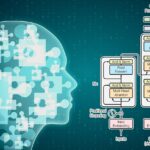In the quest for the next leap in artificial intelligence (AI) architecture, one paradigm is gaining attention: Hyperdimensional Computing (HDC). Unlike traditional deep neural networks or von Neumann architectures, HDC represents information in massively high-dimensional spaces (thousands of dimensions), offering robustness, interpretability and potentially much lower power consumption.
As AI systems proliferate—from edge devices to massive cloud data centres—the pressures of energy, robustness, latency and data movement demand new thinking. HDC may be the “next frontier” in AI architectures.
What is Hyperdimensional Computing?
At its core, HDC builds on the idea of representing information in “hypervectors” — very long vectors (e.g., thousands of components) in a high-dimensional space. According to the Wikipedia summary:
“In HDC, information is thereby represented as a hyperdimensional (long) vector called a hypervector.”
These hypervectors are manipulated via algebraic operations like binding, bundling, permutation—so that encoding, combining, storing, comparing information becomes a matter of vector arithmetic in high-dimensional space.
Early roots include vector symbolic architectures (VSAs) and holographic representation models; HDC is now getting traction as an efficient hardware-friendly AI paradigm.
Why this matters for AI architectures
Here are the key advantages of HDC:
- Robustness to noise and errors: Because information is distributed over very high dimensions, HDC representations tolerate corruption or bit-flips better than narrow representations.
- Interpretability: Some researchers argue that the algebra of hypervectors gives insight into how decisions are made — unlike “black-box” deep nets.
- Hardware efficiency: HDC is well suited to in-memory computing or analog devices where moving data is expensive. There are experimental systems using phase-change memory and memristive crossbars.
- Unified representation: With hypervectors you can encode modalities (text, images, sensor streams) in the same high-dimensional space, simplifying multi-modal architectures.
- Scalability for edge/low-power settings: Recent TinyML HDC optimisations show HDC is viable on resource-constrained hardware.
Given your interest in emerging AI architectures and hardware (for your FutureGenNews platform), HDC is a strong topic.
Use-cases and Real-world Examples
- Classification of images: HDC systems have replicated tasks that neural nets perform, using hypervector representations.
- Graph classification and pattern recognition: A recent survey covers HDC applied to graph-structured data.
- TinyML/edge devices: The “MicroHD” work shows HDC optimisation for very low-resource devices.
- In-memory HDC hardware prototype: 760 k phase-change memory devices implemented an HDC classifier in hardware.
Challenges and Open Questions
While promising, HDC has hurdles:
- Dimensionality trade-off: Higher dimensions → more expressiveness but more hardware cost. Optimising this is non-trivial.
- Encoding real-world data: Mapping images, text or sensor streams into hypervectors meaningfully is still research-intensive.
- Hardware maturity: Although prototypes exist, large-scale commercial HDC hardware is still nascent.
- Ecosystem & tooling: Compared to neural networks, fewer open libraries, fewer practitioners; bridging this gap takes time.
- Benchmarking: It remains to be seen where HDC truly outperforms deep nets (and in what domains).
Future outlook
We can anticipate several trends in HDC’s evolution:
- Hybrid architectures combining HDC + neural networks (e.g., neural encoding feeding hypervectors).
- More hardware accelerators optimised for HDC (in-memory, near-memory, analog devices).
- Deployment in domains with strong constraints: e.g., sensor networks, edge AI, always-on devices, ultra-low power.
- Standardisation and open tool-chains: As research matures, we’ll see frameworks for hypervector operations, encoding libraries, etc.
- Since HDC tolerates noise, we may see its adoption in fault-tolerant systems, neuromorphic and brain-inspired hardware.
Why it matters now (for your audience & platform)
On your FutureGenNews platform and YouTube/Instagram content around “AI architectures”, HDC offers a timely, less-covered frontier. You can position it as “what’s next after deep learning” and appeal to technologists, hardware engineers, AI researchers. Given your interest in quantum/AI/next-gen tech, HDC fits nicely.
Summary (TL;DR)
Hyperdimensional computing (HDC) is a brain-inspired paradigm that uses high-dimensional vectors (hypervectors) to represent and manipulate information. It offers robustness, hardware efficiency and new ways to structure AI systems. While still emerging, it may well be the next frontier in AI architectures—especially for edge, low-power and fault-tolerant applications.
